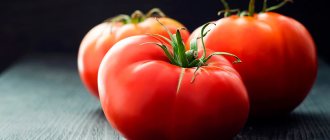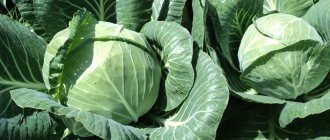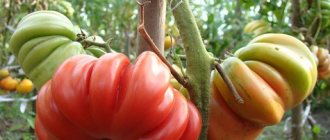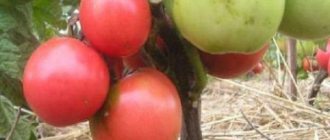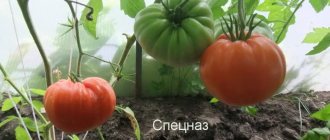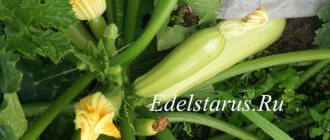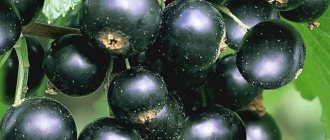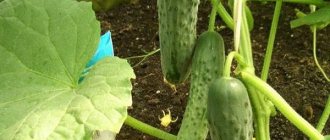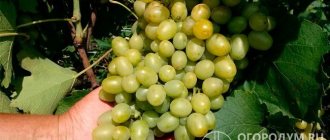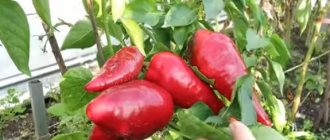Altai breeders truly presented a royal gift to vegetable growers. Meet the Korolevich tomato, and this vegetable fully lives up to its name. The Central Siberian Botanical Garden of the SB RAS, Agro LLC and the peasant farm "Sergey Nikolaevich Kondakov" worked on its creation. In 2008, the variety was registered in the State Register of Breeding Achievements of Russia and received permission for cultivation in all regions of the country. Recommended for growing in open ground. In cool regions, it is better to plant tomatoes in protected soil. Our hero is not a hybrid.
History of the variety's creation
This tomato variety was bred by Altai breeders from several Russian companies:
- FGBUN Central Siberian Botanical Garden SB RAS;
- LLC Agro;
- Peasant farm "Kondakov Sergey Nikolaevich".
The variety was developed at the beginning of this century, then variety trials were carried out, and only in 2008 the Korolevich tomato was included in the Russian State Register.
The Korolevich tomato is recommended for growing in garden beds in open ground, and in regions with an unfavorable climate for farming, this tomato can be planted in greenhouses or film greenhouses.
Disease Prevention
According to the description, the Korolevich variety has good resistance to various diseases, but if basic care rules are not followed, the tomato can become infected with late blight.
Excessive watering causes root rot. This can be determined by external signs - yellow leaves appear on the plants, growth and formation of fruits stops.
For prevention, the resulting stepsons are removed. This gives the bush ventilation and prevents late blight. After harvesting, fruit-bearing plants are removed.
Tomato Korolevich: variety description
This tomato is classified as an indeterminate type,
therefore, its shoots have unlimited growth power. Therefore, the height of the central shoot of the Korolevich tomato is usually 1.5-1.8 m - usually at this height it is recommended to pinch the tops of the shoots.
Otherwise, too many fruits will be formed that will not have enough nutrients to fully ripen.
Photo of tomato Korolevich
On a note!
The Korolevich tomato is classified as a mid-season variety - from the moment the sprouts appear until the first fruits are harvested, it takes up to 4 months. The fruits on the bushes do not ripen at the same time - the first of them are harvested in the second ten days of August, and the last ones ripen in early September.
The bushes are spreading - the shoots are erect, medium leafy and quite powerful, but they can bend towards the soil under the weight of ripening fruits. The foliage is medium in size, slightly wrinkled, the edges are slightly wavy, rich emerald color.
The inflorescences are simple, up to 3-5 ovaries are formed in them. The first of them is formed above the 6th permanent leaf, and each subsequent one is formed through the next two leaves. The stalks have no articulations.
EXCELLENT VARIETIES OF TOMATOES!
Tomato Lady fingers Tomato Striped chocolate Tomato AURIYA
Tomato Korolevich can be safely classified as a large-fruited variety - the average weight of tomatoes reaches 200-500 g. With the correct formation of bushes and rationing of bunches, you can achieve a fruit weight of about 700-900 g.
The shape of large ripe tomatoes is heart-shaped, with slight ribbing at the stalks. The skin is of medium thickness, with a characteristic gloss; in unripe tomatoes it is a soft light green color, without a darker spot at the stalk.
But ripe Korolevich tomatoes acquire a rich pink color. The walls of the tomato are thick, the pulp is melting in the mouth, fleshy, with a small amount of liquid. There are a large number of seed chambers inside (6-7 pieces), the number of seeds in them is small.
The taste of ripe tomatoes of the Korolevich variety is delicious, sweet with a slight sourness.
The harvested crop may become wrinkled during transportation, so it must be transported carefully.
Ripe fruits cannot be stored for a long time, so it is advisable to immediately eat or process them.
Good variety of tomatoes Korolevich - video
Features of cultivation
Korolevich is grown using seedlings. It can be planted both in open and protected ground.
The culture is not picky about care. Particular attention should be paid to watering. It is equally important to carry out the garter on time, because Growing fruits are very heavy and can break off shoots.
Under any conditions, the yield remains unchanged. The fruits ripen gradually, which extends the period of their use.
Planting seedlings
Seedlings need a lot of light
The seeds are first disinfected in a weak solution of potassium permanganate. To improve germination, they are placed in a solution of Epin Extra for 6 hours (1 drop per 100 ml of water).
Sowing of seeds is carried out in mid-March.
- The earth mixture is lightly compacted and mulched with peat (1 cm layer).
- Seeds are sown (deepened) using tweezers.
- Then be sure to water it with warm water.
- After this, the seeded material is covered with film and placed for germination at a temperature of 25˚C.
- After the first shoots appear, the film is removed and the seedlings are transferred to a lighted place.
- During the first 7 days, the daytime temperature is 18-20˚C, the night temperature is 16 degrees, and only then it is raised to 22˚-24C.
During the entire period of seedling growth, monitor the humidity in the room.
After the appearance of 2 true leaves, pick them using larger cups. This makes it possible to develop a more powerful root system.
Fertilizer
Fertilize regularly, and do not forget to remove weak shoots.
The process of fertilizing seedlings has its own nuances: it is watered in the evening, and a solution of preparations is added in the morning.
- The first feeding is root feeding. When the first true leaves appear, use any complex fertilizer with a high nitrogen content (0.4 g superphosphate, 0.5 g urea, 1.5 g potassium salt per 1 liter of water);
- The second - a week before the dive: 4 g of superphosphate, 0.6 g of ammonium nitrate and 2 g of potassium;
- The third - a week after. Use any Kemira complex fertilizer for tomatoes (description of use in the instructions).
Transplanting seedlings
After planting, the plants must be watered well.
After 1.5-2 months, the plant has 6 or 7 leaves and flower clusters begin to form. This indicates that it is time to transplant the seedlings into the ground:
- Having chosen a day suitable for the weather, before planting, pre-form holes;
- the distance between them is up to 0.5 m;
- add 1 tbsp to each. organics;
- seedlings are planted in these seats one at a time;
- Afterwards, water abundantly and loosen the top layer of soil to avoid the appearance of a crust on the surface of the soil.
As the plant forms, it is tied to a specially prepared support, because the stem may break under the weight of future fruits.
Pros and cons
The main advantages of the Korolevich tomato include:
- large fruit;
- good adaptability to any growing conditions;
- this tomato variety can bear fruit even at low temperatures;
- resistance to most diseases;
- delicate pink color of ripe fruits;
- versatility of the harvested crop;
- good presentation and taste of ripe Korolevich tomatoes.
Among the disadvantages of this tomato it should be noted:
- poor keeping quality of collected fruits;
- Large and too soft fruits are difficult to transport - they easily wrinkle and flow.
Care
The Korolevich tomato variety does not require painstaking care. It is enough to ensure that the soil is not overdried or waterlogged, regularly apply fertilizers and loosen the soil.
When the first ovaries appear, it is necessary to remove the lower leaves from the bushes and tear off third-party shoots so that they do not take nutrients from the fruit.
Do not water tomatoes abundantly, especially by splashing moisture on the leaves. It is better to moisten the soil by adding water in small portions to the stem. It is important to tie the tomatoes to the support in a timely manner.
Organic feeding - bird droppings, compost, manure, peat - is applied every 14-15 days. You can also add lime and superphosphate.
Tomato Korolevich: planting seedlings and further growing the variety
Tomato Korolevich is grown in seedlings. In this case, the seed material should be planted in the last ten days of March, and the grown seedlings should be transplanted to a permanent place in the last ten days of May, when the threat of spring frosts has passed.
On a note!
Since the Korolevich tomato is not a hybrid, many vegetable growers collect seed material from plants to later plant in beds.
Such seeds need to be tested for germination by placing them in salt water. In this case, only those that sink to the bottom are left. They are taken out, washed with running water and placed in a container with pink potassium permanganate for disinfection for half an hour.
WHEN TO SOW TOMATO SEEDS FOR SEEDLINGS FOR OPEN GROUND AND GREENHOUSE - video
After this, the washed and dried Korolevich tomato seeds are ready for planting. Soil for planting is purchased at a specialized store and laid out in containers.
Then the seeds are placed in the soil, sprinkled with a thin layer of sand on top and watered. The containers are covered with glass on top and placed in a warm, dark room until germination. Usually the first shoots appear 6-8 days after planting.
After the sprouts appear, the glass is removed and the plants are transferred to a place well lit by sunlight.
Recommendations for cultivation and care
Korolevich is recommended for growing in closed and open ground using the seedling method:
- Sowing should be done in March, on previously prepared and slightly compacted soil, mulched with a topsoil layer or peat. The mulch layer should not exceed 1 cm.
- Next, the seedlings need to be poured with warm water through a sieve so as not to wash out the thin top layer. Cover the container with film and place in a warm place. Recommended temperature for germination is +25 degrees.
See also
Description of the tomato variety Buratino, its characteristics and productivityRead
- When the seedlings hatch, the film should be removed and the seedlings should be moved to a bright place. And during the first week, maintain the temperature within +14–16 degrees, then increase to +20–22 degrees.
- The appearance of the first true leaves means that it is time to plant the sprouts in separate containers.
- At the age of 60–65 days, when the sprouts already have 6–7 leaves and the first flower cluster has formed, the seedlings should be transplanted to a permanent habitat.
- It is recommended to plant the bushes at a distance of half a meter from each other, and place organic fertilizers in the holes before planting.
- During the growth process, a tomato requires the formation of one or two stems and tying to a support, since the plant tends to bend under the weight of the fruit.
- Despite the name, Korolevich is not too demanding of care and attention. It is enough to provide the tomatoes with regular watering and periodic fertilizing, as well as from time to time to loosen the soil between the bushes and hill them up.
The fruits ripen gradually, allowing you to enjoy them until September.
Further care for the Korolevich tomato
The Korolevich tomato seedlings are transplanted into previously prepared beds. They are dug up, the remains of vegetation are removed and organic matter is added - at least 7 kg for each square of area.
The distance between adjacent plants when planting should be 0.5 m, and the row spacing should be at least 0.7 m.
TOMATO CARE. First IMPORTANT steps - video
Watering regime for tomatoes
The Korolevich tomato is distinguished by its unpretentiousness to growing conditions. However, watering is carried out regularly. Before budding, bushes of this variety should be watered once every 6-8 days, and from the moment flowering begins, the watering regime is changed - watering is carried out once every 2-3 days, and more often in hot, dry weather.
After watering, it is recommended to loosen the soil in the root zone to remove the crust that forms on the soil surface. You should also weed the beds once a week to remove emerging weeds.
Formation of bushes and garter
Typically, tall Korolevich tomato bushes are formed into one or two stems - in this case, the yield of the variety will be higher.
The grown shoots are tied to strong supports so that they do not bend or break under the weight of ripening large fruits.
Photo of the formation of tomato bushes
Feeding tomatoes
Before transplanting seedlings, a sufficient amount of organic matter must be added to the beds, and 20 g of superphosphate and potassium sulfate are placed in the holes.
However, fertilizers applied in the spring are not enough for large fruits to ripen on the bushes. Therefore, during the season, with an interval of 12-14 days, organic matter (slurry, chicken manure or greenfinch) and complex mineral fertilizers are applied alternately to Korolevich tomatoes.
Agricultural technology
Seeds for seedlings are sown at the end of March. Plants are ready for transplanting into the ground in 60 - 65 days. The bushes are tied up and formed into 2 stems, and to get very large specimens - into 1 stem. The culture is demanding on watering and fertilizing. Preventive spraying is required.
Korolevich is a productive variety that delights with its delicious taste. Vegetable growers are generally very satisfied with the crop. Tomato requires standard agricultural technology. The only disadvantage of the variety is the presence of green shoulders, which appear in cold weather, with insufficient lighting or improper feeding. You can collect the seeds yourself.
